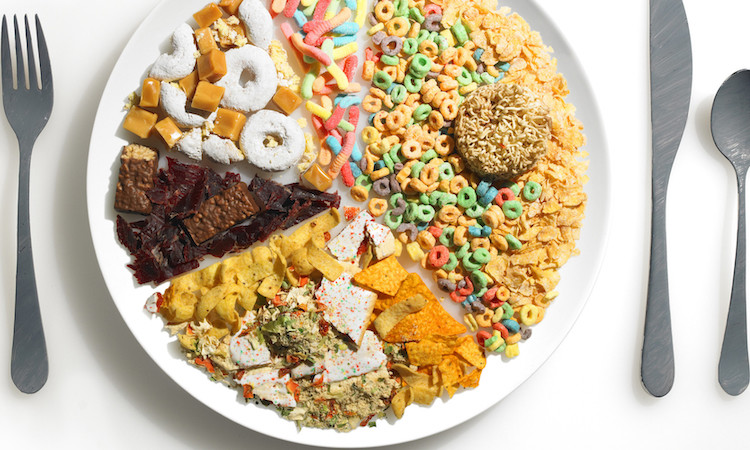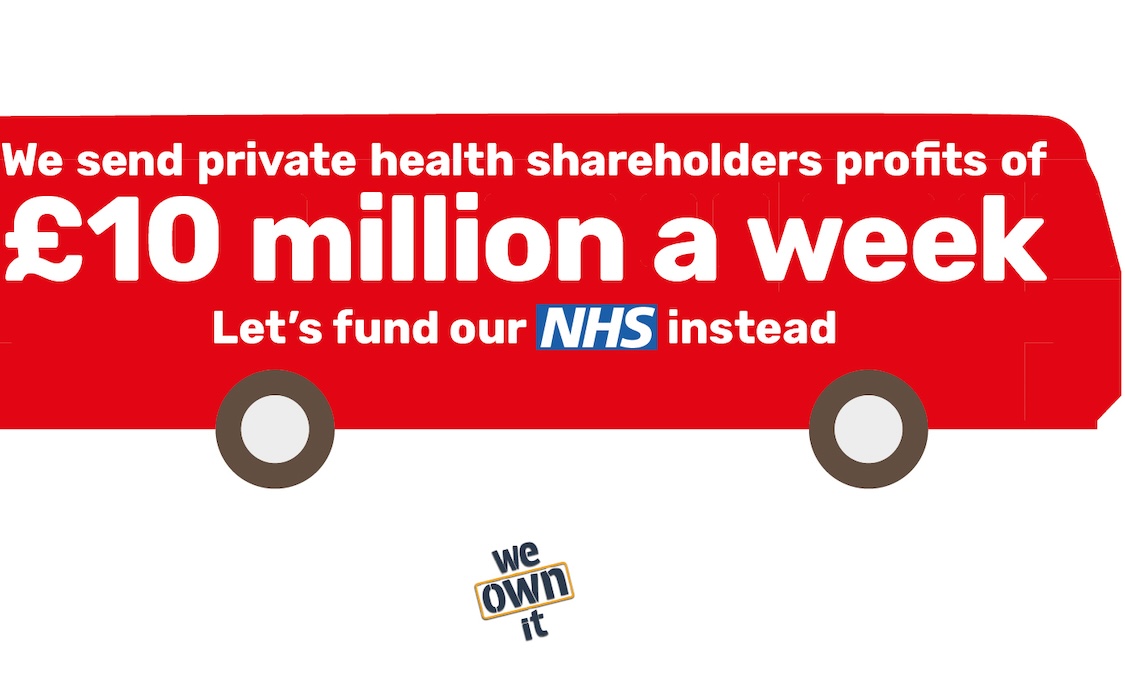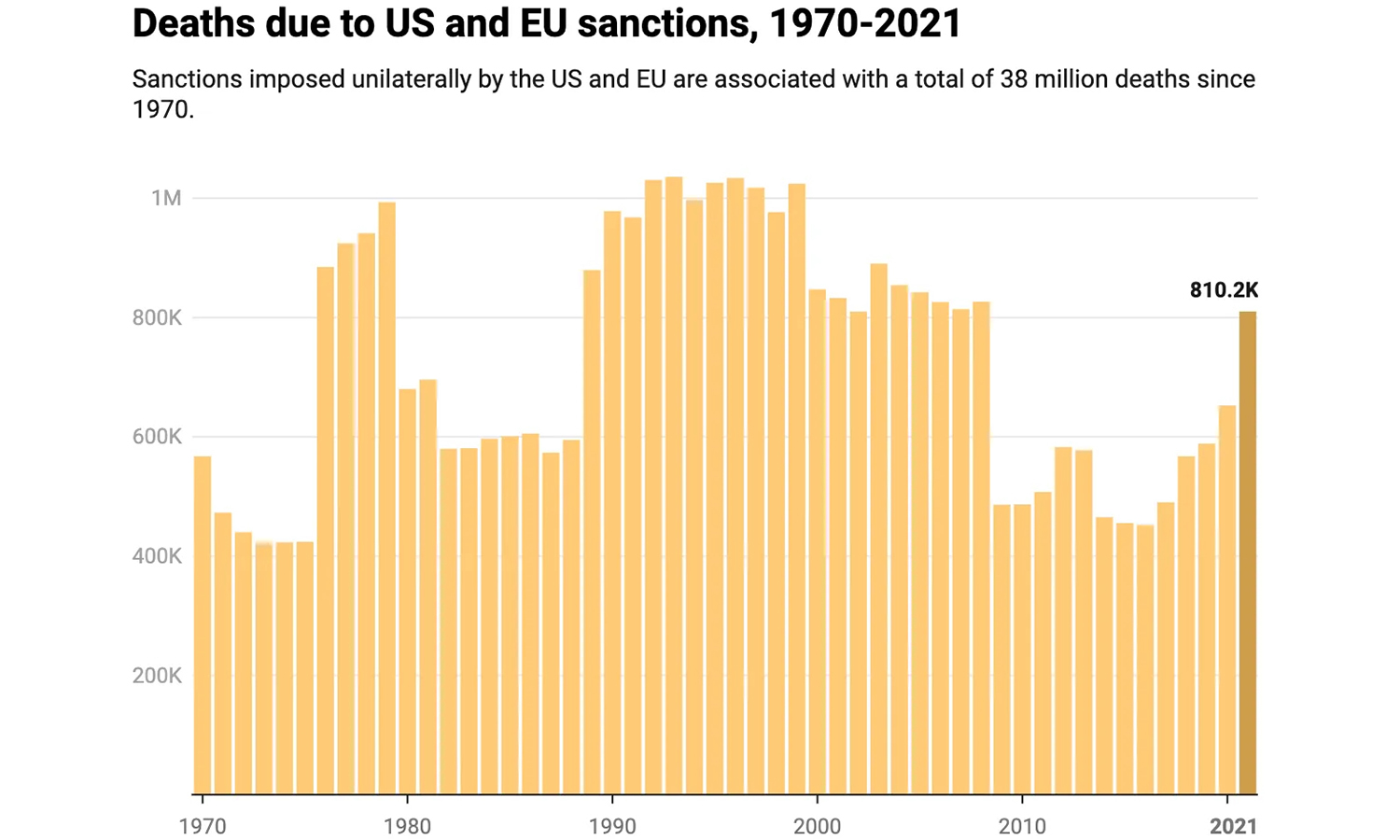Around 11,000 people in England were hospitalised with malnutrition last year. Read that again.
Provisional data recently obtained by the Times Health Commission under freedom of information laws reveal that cases of malnutrition have more than doubled in a decade and have quadrupled since the banking collapse of 2007/8 and the harsh regime of cuts and austerity that followed in its wake.
From 2022 to April 2023, 10,896 NHS patients, 312 of them children, were hospitalised with the condition in England alone.
“If this is indicative of the health of our most vulnerable, then it is shocking,” commented Dr Clare Gerada, president of the Royal College of GPs. “The poorest people in this country are poorer than any other counterparts in Europe … and it’s poor diet.
“The most common reason a child under five has a general anaesthetic now is for dental care, so that’s a sign of malnutrition. This isn’t about the health system, it’s about the social determinants of ill health, indicative of the last 15 years of austerity.”
‘Victorian’ illnesses rearing their ugly heads
Doctors are sounding the alarm that the cost-of-living crisis, coming on top of a decade and a half of cuts to social provision and has falling pay, is also leading to a rise in various ‘Victorian’ illnesses, which British workers had long considered to be things of the past, such as scurvy and rickets.
These diseases, owing to the ease with which they could be cured once their causes were discovered, have barely been seen in any country that has been able to provide the basic necessities to its people.
Scurvy, for instance, develops when a person isn’t getting enough vitamin C from their diet. Symptoms include fatigue, swollen or bleeding gums, and susceptibility to bruising. It takes months of persistently low levels of vitamin C to reach the point of disease. Once the scourge of sailors, who endured long journeys on poor-quality rations, the 18th-century surgeon James Lind found that the simple addition of limes to the sailors’ diet was enough to eradicate it aboard ship.
Dr Gerada has said that the number of scurvy admissions could be indicative of the inadequate “tea and toast” diet of many elderly Britons, who are unable to afford the high cost of fresh fruit and vegetables. Subsistence on tea and toast is the reward that awaits a worker after a lifetime of work in this late stage of capitalism’s decline.
Rickets, as suffered by Tiny Tim in Charles Dickens’s A Christmas Carol, is a disease caused by a lack of vitamin D or calcium. It affects bone development, causing pain, poor growth and weakened bones, which in turn can lead to deformities. It mostly disappeared in the west in the early 1900s after many foods began to be fortified with vitamin D.
“People are doing without. Parents are struggling to do the basics for their children. We’re going back to a situation where unless we look after our poor, we’re going to end up with more of these diseases of the Victorian era,” says Dr Gerada. “We won’t end up like the Victorians because it’ll all be sorted by a tablet, but it’s a sad environment that we have to sort out poverty by giving out vitamin supplements.”
A looming health crisis
Anna Taylor, director of the Food Foundation, described Britain’s current food environment as a “ticking time bomb for health”.
Taylor, who is a nutritionist with a long career supporting projects in Africa and South Asia, said: “We have a diet crisis which is in parallel to some of the poorest countries in the world that have got very high levels of undernutrition in children and very high levels of childhood stunting, and we’ve got a similarly proportionate problem which we see manifest in our children.
“We see that the quality of our children’s diets is very poor. We see that across the wealth spectrum but particularly these very marked differences in healthy food consumption between the poorest and the richest children in the UK.”
She added that the low consumption of fruit and vegetables, but high consumption of ultra-processed foods meant that Britain was “reaching a crisis point in terms of the knock-on effect this is having on children as they develop, but also the lag that is then creating for later life”.
Obesity
Dr Gerada has said that the obesity epidemic is another indicator of malnutrition, with most children who are obese more likely to be vitamin D deficient “because they’re not getting the right calories”.
The biggest cause of avoidable death today in Britain is our food. Ultra-processed foods make up the greater part of the average diet in Britain (57 percent of the UK diet is processed food compared with just 14 percent for France and 13 percent for Italy) and, owing to the nature of these foods, calorie dense yet nutritionally barren, we are now facing the apparent contradiction of the twin spectres of obesity and malnutrition walking hand in hand.
These killers of men and women were not formerly so in lockstep as they are now. In the past, obesity was generally a disease of the rich; a disease of overindulgence, while malnutrition generally affected the poor; a disease of lack.
All that changed with the advent of the processed food industry. Today more than 80 percent of the processed foods sold in Britain are so unhealthy that, under World Health Organisation (WHO) guidelines, they are considered unsafe for marketing to children.
Adults don’t do so well on such a diet either. Today’s prevalent diet of cheap, high calorie, low-nutrient food has led to a situation where 60 percent of adults in the country are overweight or obese. On the current trajectory, that figure is expected to reach 80 percent by 2060.
Obesity’s symptoms include depression, anxiety, infertility, high blood pressure, painful joints, breathlessness, broken sleep, cancer, dementia, heart failure and type 2 diabetes (with its own attendant risks of blindness, peripheral neuropathy and limb amputation). The Organisation for Economic Co-operation and Development (OECD) estimates that the UK economy loses £74bn a year in reduced workforce productivity, shortened lives and NHS costs as a result of conditions linked to obesity.
Henry Dimbleby, author of Ravenous: How to Get Ourselves and Our Planet into Shape, wrote in the Times recently: “It is extraordinary that there is not a public uproar about this. Imagine if a novel virus started killing and disabling people on such a scale, and with no end in sight. You don’t have to imagine it: we know how far politicians and the public will go to combat such a threat.
“Unlike Covid, however, the plague of diet-related disease has crept up on us stealthily, under the seductive guise of ‘choice’. Our food system has slid into dysfunction, taking our bodies with it.
“This change has been sufficiently gradual to lull us into a kind of helpless submission. No matter how bad the headlines, the British public (and political class) can’t seem to muster an appropriate level of fear. Instead, we recoil instinctively into what we believe to be ‘common-sense’ solutions. Too often, those solutions are not just wrong but counterproductive.
“Between 1996 and 2020 successive governments introduced 689 different policies intended to halt our national weight gain. Yet we keep getting fatter and sicker. This is because such policies nearly always come at the problem from the wrong angle.
“They start from the assumption – shared by most in this country – that dietary ill health is chiefly an issue of personal responsibility; that the answer must be to educate the masses in healthy eating, encourage us to exercise and leave the rest to individual willpower.
“This feels like common sense. We know our bodies grow or shrink depending on what we put into them and feel a rush of impatience at the idea of blaming ‘the system’ for our expanding waistlines. Surely it is up to each of us to take responsibility for what we eat?
“This line of thought fails to address the sheer scale of the problem. In 1950 under 1 percent of the UK population was clinically obese. Today, the figure is 28 percent. Are we to believe that, in the intervening years, the population has suffered a massive collapse of willpower? Of course not. Humans have not changed. The food system has.” (Britain’s diet is more deadly than Covid, 24 March 2023)
Obesity isn’t a moral failing; it is a disease. We don’t have ‘obese people’, we have a growing epidemic of people sick with obesity. An individual only has so much power to affect their environment, and when that environment creates all the conditions for obesity to grow, grow it does.
Blaming the individual is merely so much propaganda to hide the systemic failures that have led to this crisis. Particularly when one considers that no amount of education can change the fact that nutritious fresh foods are now far more expensive than sugary processed (and highly addictive) food-like substances.
The laws of the market combined with the collapse in trade union militancy mean that minimum wages are simply not set at a level that will allow many workers to ‘make the right choice’, even if they had access to the information (and time, and cooking equipment) that would facilitate such ‘choices’.
In hiding these failures and blaming our fellow workers for their system-caused diseases, we only serve the interests of capital.
Humans haven’t changed, the ‘food system’ has
The problem has now become evident to enough people that there is a growing body of work decrying the descent of the British diet. Some investigators provide useful figures to give us an idea of the trend towards the rise of ill-health and early death. A few have even pointed out the seeming indifference to this pandemic by the bourgeois class and its representatives in the political and media establishments.
Fewer still have hinted at a systemic cause. But even those who do speak of food production and its distribution via the market (showing how affordability determines people’s access to food, not need) they examine this phenomenon in isolation: the ‘food system’.
But we don’t live in a ‘food system’. We live in an economic, political and social system, whose operation underpins all production and distribution in Britain: we live in a capitalist system. The capitalist system is, in part, generalised commodity production, where nigh-on everything is produced for its saleability, not for its use.
Every industry (food or otherwise) under conditions of capitalism creates commodities for sale. But these commodities can only be sold when there is a demand – when there are customers able to pay for them. Under such a system, there is an ever-present risk that customers will not be found when the commodities come to market. This state of affairs may extend for a more or less prolonged period of time, during which the profit that motivated their production can’t be realised.
A capitalist could go bust in such a situation, having invested in the production of a commodity that can’t be sold, or having produced so many commodities (as economies of scale and the laws of competition continually demand that he must) that the masses of workers can’t absorb them (afford to pay for them). Still, if conditions allow, their owner can store these surplus goods until such a time as a market can be found.
The food industry has an in-built disadvantage in this respect: its products, if they have any nutritional value, will rapidly perish. This obviously undermines the potential for storage. If capital is held immobile in a vast quantity of (hopefully temporarily) unsaleable foodstuffs that have mere weeks or even days of shelf-life, this is a profit-destroying disaster in the making. While 5,000 tons of bauxite will keep for as long as their producers have the resources to store them; a strawberry won’t.
So how does the food industry deal with this drawback? The holy grail of all industrial commodity food producers is not nutrition (the human standard for judging food), but portability and shelf life. The first requires packaging, so that food items can be transported over long distances and easily stacked.
The second can be extended in many ways. By freezing (which slows or stops the chemical reactions and biological process that cause foods to decay – preserving nutrition but adding considerably to transport and storage costs). By the addition of preservatives (biocides, antioxidants, salts, large quantities of sugar). By changing the environment in which they are stored (pickling, packing in inert atmospheres). Or by mechanical processing (drying and breaking down ingredients, removing bioavailable constituents so as to inhibit bacterial growth).
This is by no means an exhaustive list, but it serves to illustrate the incentives that drive the development of various methods of preservation.
In nature, spoilage of foodstuffs results from the action of bacteria – an entirely unavoidable process. If a food has nutritional value, something will start eating it! Bear in mind that our own digestion consists of trillions of micro-organisms, including a multitude of bacteria, collectively known as the gut microbiome, which live in our stomachs and break down the food we eat to produce energy and various substances our bodies need to stay fit and healthy.
Food processors use machines or automated chemical processes to render food products into a hostile environment for bacteria – either by making them (or their packaging) deadly to bacteria or by removing certain nutrients (macro or micro) that bacteria need to grow and reproduce.
The trouble here is that the things the bacteria need to grow and thrive are pretty much the same as what humans need to grow and thrive. Meaning that many foodstuffs, after processing, and particularly after ‘ultra-processing’, which breaks down constituent parts into substances that are very hard for the body to deal with properly, are lacking in the nutrients our bodies are looking for.
Not only are ultra-processed foods lacking nutrition, they are many of them positively toxic – creating for our bodies the double burden of having to process substances that they cannot make use of with systems that are weakened from chronic nutritional deficiencies.
This creates a situation where many of us find ourselves hungry no matter how much we have eaten, pushed by desperate bodies into consuming large numbers of what have been dubbed ‘empty calories’ in an endless quest to satisfy our bodies’ desperate signals for nutrients. Meanwhile, those of us who have been ‘educated’ into trying to ‘take personal responsibility’ to avoid this cycle are finding we are simply unable to fund a decent diet; unable to secure adequate nutrition from the products available on a minimum-wage family budget.
Where once we had to eat a certain amount of food to gain a certain amount of vitamins and minerals, things vital to our and our bacteria’s health, the advent of ultra-processing and the attendant reduction of those vital compounds now means that we are eating far more in an effort to maintain ourselves from day to day – and storing up long-term consequences for our biological systems as we do so.
This explains the seeming contradiction of a working-class population that is increasingly suffering from obesity even as it is simultaneously falling ill from undernourishment. We are routinely ingesting ‘food-like substances’ from which our bodies are unable to extract much in the way of nutrition while simultaneously loading our systems with waste products they simply cannot process.
This in turn is leading to deposits of fat throughout our systems, the furring up of our arteries, the overburdening of our pancreatic, blood sugar and adrenal systems, and all the health problems that follow these dangerous and cumulative problems.
Malnutrition is a social disease
Last year, Department for Work and Pensions (DWP) data revealed that around one in six people in the UK were living in relative poverty, measured as “relative low income” before housing costs. This rose to just over one in five people once housing costs were accounted for (as, indeed, they need to be!)
These Britons, many of them pensioners who have worked all their lives, and far too many of them children whose development has barely begun, are routinely suffering from the poverty-induced diseases described above, blighting their lives in manifold and entirely avoidable ways.
The old adage that ‘the true measure of any society can be found in how it treats its most vulnerable members’, comes to mind. Certainly, it is our view that the true measure of an economic system is how it provides for the people who produce its wealth.
Measuring the capitalist system through this lens, we find it wholly inadequate and long past its sell-by date.
















